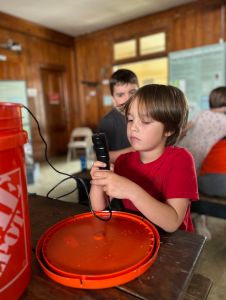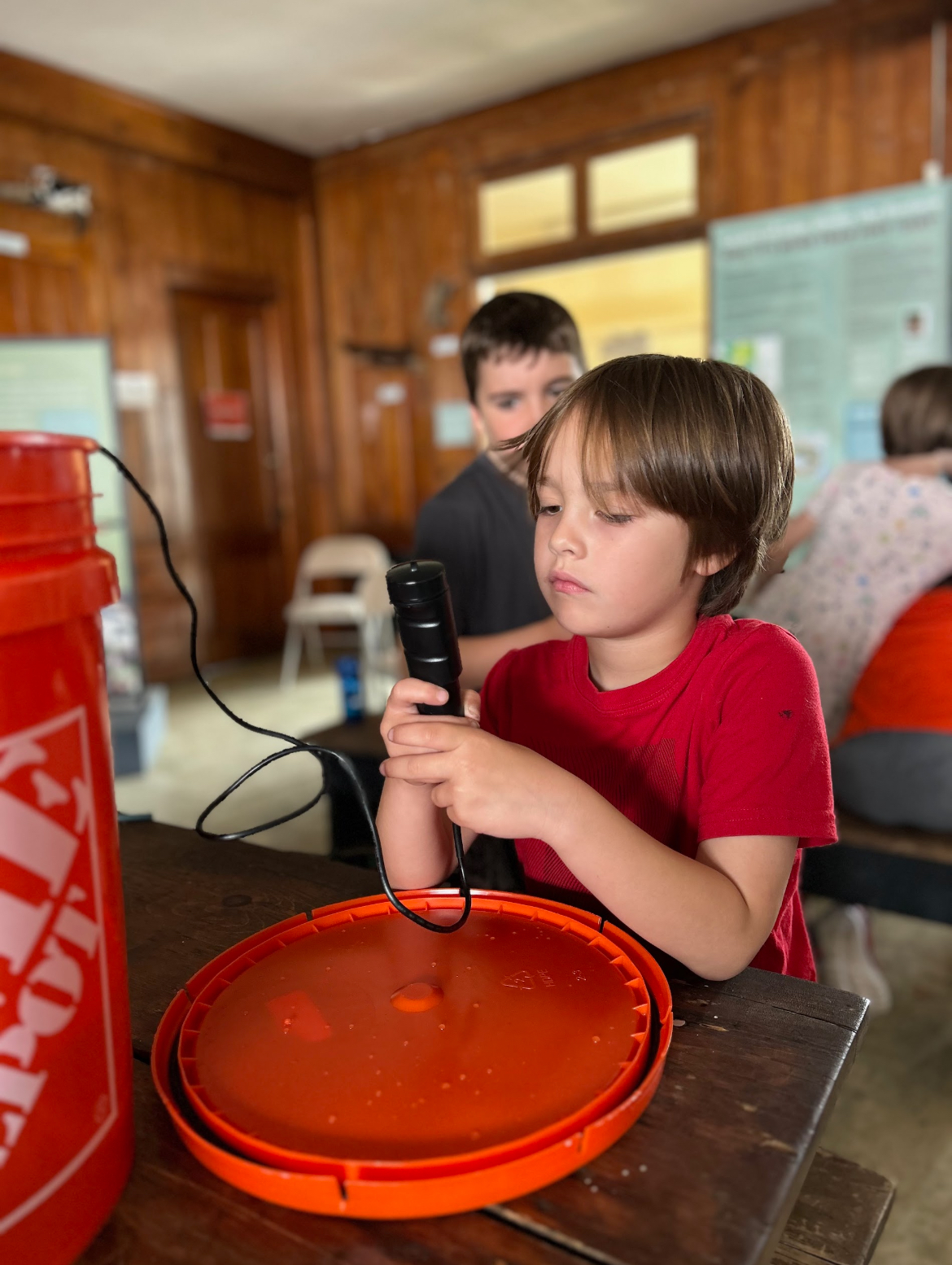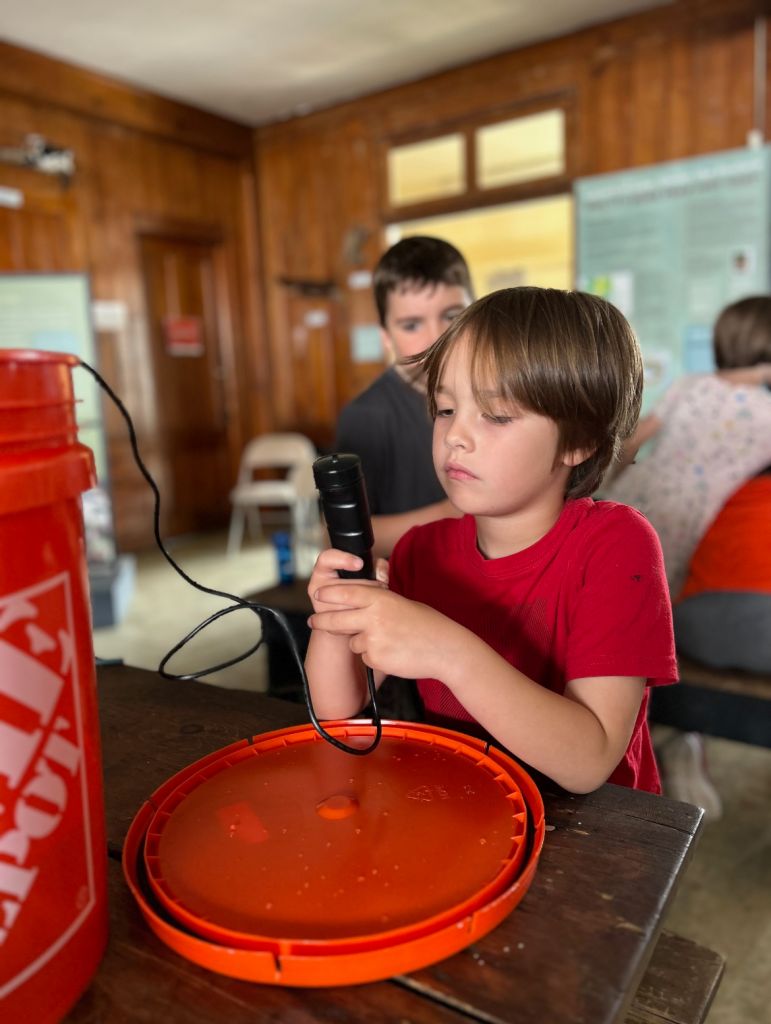Skye ’25 learns about harmful algal blooms and shares their information with local youth discussing the economic impacts as well as the physical danger that blue-green algae brings to the Finger Lakes region.
When I first began educating young campers in my hometown about blue-green algae I did not realize how significant the issue was. Blue-green algae, a form of harmful algal blooms (HABs), has inflicted the Finger Lakes, specifically Ithaca, New York, in many ways.
I entered my first lesson with the goal of informing the local youth of the physical and health dangers caused by blue-green algae by utilizing scientific reasoning. I worked alongside the Cayuga Nature Center and taught kids ages five to twelve. Throughout four lessons, campers learned how to record scientific data, use dissolved oxygen detectors, and detect pH with testing strips. My main goal was for students to grasp an idea of what exactly blue-green algae is and, when it appears, why to avoid contact with it. After further research, my initial intent with the campers transgressed just the lab portion of blue-green algae.
Through the Cayuga Nature Center, I was able to become in contact with the Museum of the Earth, a local museum based in Ithaca, NY. With the Museum of the Earth, I talked with scientists about their research of HABs both in and outside of the Finger Lakes. I gained a more detailed understanding of the issue, touching more on the economic impact of HAB(s).
Kids are innately curious and when working with them they love answers and reasoning. Most, if not all, of the campers understood the physical dangers of blue-green algae; similar to how the average person knows not to touch poison ivy. For my last session with the campers, I wanted to connect all of the lab data to the reasoning of why identifying harmful agents of blue-green algae is beyond understanding a physical risk. With the Finger Lakes attracting most of its visitors due to its lakes, campers were very perceptive when it came to understanding the economic impacts of blue-green algae. Campers discussed, realizing that with fewer tourists, fewer people would be purchasing from many local businesses, which could lead to the closure of many small businesses in our community, strongly impacting the economy and lifestyle.
Overall, using science to help demonstrate exactly why something is harmful greatly improved campers’ competency in the dangers of blue-green algae. In the end, campers were able to synthesize their pre-existing and newly gained knowledge of blue-green algae to form a stronger conception of a typical hazard of their everyday lives.


